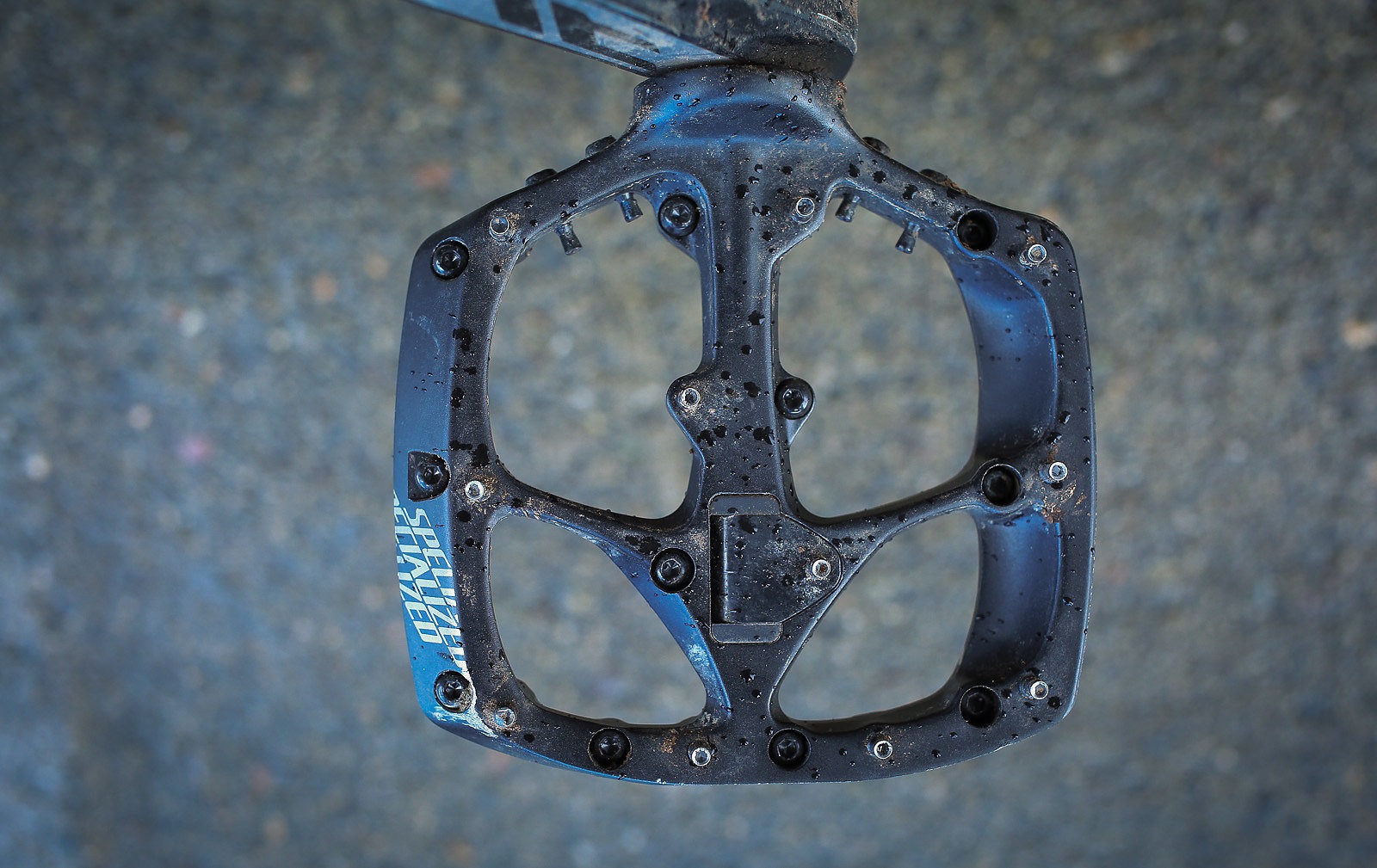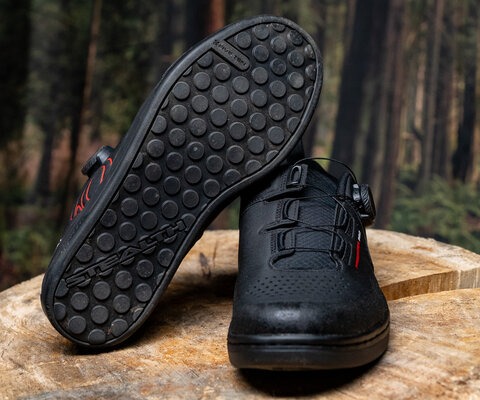
#########HEADLINE
I don’t care who you are, it’s always an adventure going from clipless pedals back to flats after months of muddy, rooty winter riding.
This is especially true when that switch is immediately followed by far steeper but equally muddy and rooty downhill trails. But perhaps the most drastic test for a pedal is when you’re suddenly forced to go platform for a long 20-plus-mile trail ride because your clipless shat the bed. While there are many flats that can take on that challenge, with their newly released Boomslang pedal Specialized is making moves to rule the platform world.
The Boomslang is a project long in the making. Originally designed for Sam Hill by Specialized’s Jason Chamberland, the basic concept has been part of the industry rumor mill for a few years. Then Sam left Specialized, and things went dormant for a bit…until this year.
The most obvious aspects of the Boomslang is its size and cleanliness. At 110mm by 108mm it’s a massive footprint, yet at 10mm thick at the spindle—fluting out to 15mm at the edges—it’s nearly as low profile as some of the shorter spindle pedals like the Straitline AMPs or Race Face Atlas. The clean chamfering and rounded, tapered outside edges look great, create a minimal profile and help shed potentially pedal-crunching impacts (of which we took a few). Replacing pins mid-ride is also simple, thanks to four spares screwed directly into the pedal.


Those pins are the next standout. Rather than the usual threaded style, the Boomslang’s pins are undercut into an hourglass shape, giving “clip-in style grip,” according to Specialized’s official description. It’s not just PR talk either—the undercut shape grips like a claw, and if one shears off at the middle (which is actually part of the design), they’re easily replaceable with an Allen key and one of the aforementioned extras. As is usually the case with extremely aggressive pins, the Boomslang requires a bit of extra caution—the grip comes at the price of instant puncture wounds for the unwary.
The feature that has caused the most buzz, however, is the new bearing system. Rather than the traditional side-inserted needle bearing, on the Boomslang the bearings are inserted through a trapdoor in the top of the platform itself. Combined with a completely smooth spindle—no threads or stepdowns, usually the weakest parts—this means a thinner, lighter pedal without any sacrifices in strength as you might experience with similarly thin models (although at 440 grams they’re still quite a ways from some of the other high-end platforms on the market). The inner bearing is snugged up against the crank arm, which causes a bit of a bulge but not one that is noticeable at all while riding.

The Boomslang’s biggest downside is an obvious one: at $180, they’re at the most expensive end of the platform pedal world, although they’re not by themselves in that price range (the DMR Vault Mg’s are $225). From our tests the Boomslang can easily match any of those other premium models for performance. Sure, it’s expensive and not the lightest, but for someone whose priority is traction over dollar signs it’s well worth the money, especially considering the (theoretical) strength added by the new bearing design. It’s may not blow your mind and revolutionize your riding, but overall the Boomslang feels exactly like what it is—a well-designed, thoroughly thought out pedal built for performance over the long haul.


